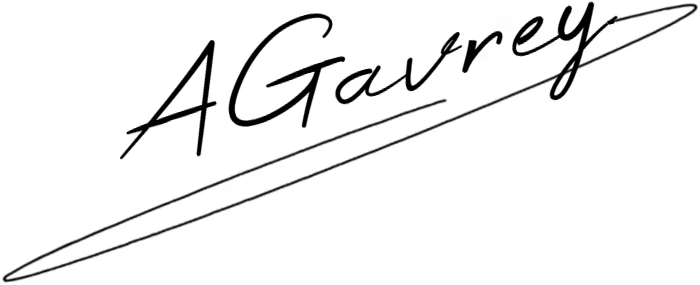Tax Rebates in Washington (WA): Overview
Washington state residents often benefit from a variety of tax rebate programs, designed to provide financial relief and encourage economic growth. Understanding these programs can help taxpayers maximize their savings while adhering to state tax laws. This article explores the different types of tax rebates available, eligibility criteria, and the application process. Whether you’re an individual, a family, or a business owner, there’s likely a rebate program tailored to your needs.
From energy efficiency incentives to property tax reductions, the state of Washington offers numerous opportunities to save. These rebates are especially important for those who qualify under specific income thresholds or meet particular demographic requirements. Learning about these options not only saves money but also contributes to informed financial planning. This guide breaks down essential details to ensure you don’t miss out on any potential benefits.
In the sections below, we delve into the nuances of Washington’s tax rebate system, focusing on common types of rebates, the steps required to claim them, and the associated benefits. As laws and programs may change over time, always consult official state resources for the most up-to-date information.
Understanding Washington’s Tax Rebate Programs
Washington state provides an array of tax rebates, each targeting specific taxpayer needs. These programs are structured to support low-income families, promote environmental sustainability, and stimulate local economies. The availability and amount of these rebates vary based on the program and individual eligibility.
One of the most popular rebate types is the sales tax refund on major purchases, including energy-efficient appliances. These refunds help reduce the financial burden for residents making eco-conscious decisions. Similarly, property tax reductions offer significant savings to qualifying homeowners, particularly senior citizens and disabled individuals.
Another noteworthy program is the Working Families Tax Credit (WFTC), which aims to assist households struggling to make ends meet. This rebate is calculated based on income, family size, and filing status, ensuring equitable support for eligible applicants. Each program has distinct requirements and benefits, making it essential to research thoroughly before applying.
Eligibility Requirements for Common Rebates
Eligibility for tax rebates in Washington depends on various factors, such as income levels, property ownership, and residency status. For example, the WFTC requires applicants to have lived in Washington for at least half the year and meet specific income thresholds. Similarly, property tax rebates often demand proof of ownership and evidence of primary residence.
For energy-related rebates, documentation of the purchase and installation of qualifying equipment is usually necessary. Programs like these may also require applicants to meet certain energy efficiency standards set by the state or federal government. Providing accurate and complete information during the application process is crucial to avoid delays or rejections.
While many programs focus on individuals, businesses also have opportunities to claim rebates. For instance, companies investing in renewable energy systems can benefit from tax credits and grants. These incentives are part of Washington’s broader efforts to achieve sustainability and reduce carbon emissions.
Benefits of Claiming Tax Rebates
Claiming tax rebates offers numerous advantages, including financial savings, increased cash flow, and a reduced tax burden. For individuals, these rebates can alleviate the pressure of high living costs and provide funds for other necessities. Families may find the additional financial support helpful for educational expenses, medical bills, or childcare.
Businesses that utilize tax rebates often experience improved profitability and enhanced operational capabilities. Moreover, by investing in eco-friendly initiatives, they can gain a competitive edge in their respective markets. Beyond financial benefits, rebates often encourage behaviors that align with state and federal goals, such as energy conservation and economic development.
| Rebate Type | Eligibility | Maximum Benefit |
|---|---|---|
| Working Families Tax Credit | Low-to-moderate income households | $1,200 |
| Energy Efficiency Rebate | Homeowners with qualifying equipment | $5,000 |
| Property Tax Reduction | Seniors and disabled individuals | Varies |
Steps to Claim Your Tax Rebate
Claiming a tax rebate in Washington requires understanding the application process and gathering the necessary documentation. The process often begins with identifying eligible rebates based on your financial situation and other criteria. Once eligibility is confirmed, applicants must prepare their documentation, including receipts, proof of residence, and tax returns.
The next step involves submitting the application, which can typically be done online or via mail. Many state programs have dedicated portals to streamline the process. Ensure all required fields are completed accurately to avoid delays. After submission, applicants should monitor their application status and be prepared to respond to any additional requests from the relevant department.
While the process may seem daunting, the state offers resources and assistance to help taxpayers navigate the system. For example, nonprofit organizations and tax preparers can provide guidance and ensure compliance with program requirements. Taking advantage of these resources can simplify the experience and improve your chances of success.
- Research available rebates and their eligibility criteria.
- Collect necessary documentation, such as receipts and tax forms.
- Submit your application through the appropriate channels.
- Monitor the application status and address any additional requirements.
- Receive your rebate and use the funds as planned.
Common Challenges and How to Overcome Them
Despite the benefits of tax rebates, applicants may encounter challenges during the process. Common issues include insufficient documentation, missed deadlines, and lack of awareness about available programs. These obstacles can delay or prevent approval, underscoring the importance of preparation and diligence.
One way to overcome these challenges is to maintain detailed records of all purchases and transactions related to rebate claims. Staying informed about deadlines and program changes is equally important. Subscribing to state tax department newsletters or regularly checking their website can help you stay up-to-date.
In addition, seeking professional assistance can make a significant difference. Tax advisors and financial planners are well-versed in rebate programs and can offer tailored advice. By taking proactive steps, you can avoid common pitfalls and maximize your benefits.
Washington state’s tax rebate programs provide valuable opportunities for savings and financial relief. By understanding eligibility requirements, preparing necessary documentation, and following the application process, residents can make the most of these benefits. With the right approach, navigating the rebate system can be a rewarding experience.
Conclusion: Maximizing Your Benefits in WA
Washington’s tax rebate programs are a vital resource for individuals, families, and businesses alike. They not only provide much-needed financial relief but also incentivize actions that align with state priorities, such as energy efficiency and economic development. By taking full advantage of these opportunities, you can significantly reduce your tax burden and save money for other important needs.
To recap, some of the most notable programs include the Working Families Tax Credit, offering up to $1,200 for eligible households, and the Energy Efficiency Rebate, which can save homeowners up to $5,000. Additionally, seniors and disabled residents can benefit from tailored property tax reductions, potentially saving thousands of dollars annually. These numbers demonstrate the significant impact these programs can have on your financial health.
Consider this: if a family qualifies for both the WFTC and the Energy Efficiency Rebate, they could receive a combined total of up to $6,200 in rebates. For businesses investing in renewable energy systems, the savings could be even greater when factoring in additional tax credits and federal incentives. These figures highlight the importance of exploring and utilizing all available rebates to maximize your financial benefits.
As you navigate the rebate process, remember the key steps: research eligibility, gather required documentation, and submit applications accurately and on time. Staying informed about updates and deadlines is crucial, as programs and their benefits may evolve. For further assistance, consult trusted resources such as Washington State’s Department of Revenue website or seek help from qualified tax professionals.
In the end, these rebate programs are designed to help residents like you. By actively participating and claiming what you’re entitled to, you contribute not only to your own financial stability but also to a more sustainable and equitable Washington. Don’t let these opportunities pass by—start exploring your options today.
Evaluation of IQTaxHub
Pros
Cons

December 2, 2024 at 6:36 p.m.
December 2, 2024 at 6:47 p.m.

